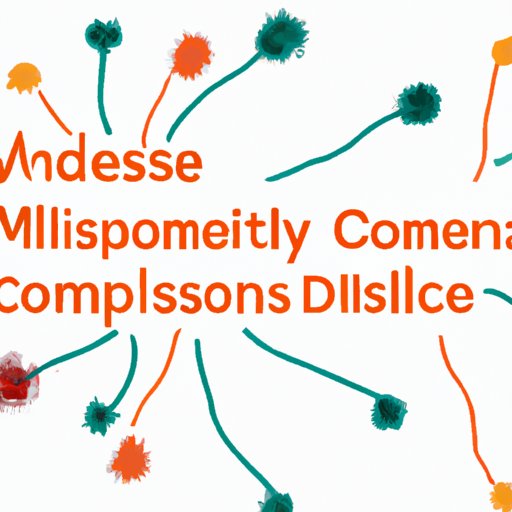
Introduction
Mixed Connective Tissue Disease (MCTD) is a rare autoimmune disorder that affects multiple parts of the body. Though it is not as well-known as lupus or rheumatoid arthritis, this disease can have a significant impact on a person’s life. In this article, we will explore what MCTD is, how it is diagnosed, treatments available, and the challenges faced by those living with this condition.
Understanding Mixed Connective Tissue Disease: Symptoms, Causes, and Diagnosis
Mixed Connective Tissue Disease is characterized by a combination of symptoms from different autoimmune disorders. It can present itself in different ways, making it difficult to diagnose. Symptoms may include:
- Fatigue
- Joint pain and stiffness
- Muscle weakness
- Skin rashes
- Fever
The cause of MCTD is unknown, but it is believed to be a combination of genetic factors and environmental triggers. Women are more likely than men to develop MCTD, and it usually affects people between the ages of 15 and 45. To diagnose MCTD, doctors may perform blood tests to look for specific antibodies associated with the disease, as well as imaging tests to look at organs and joints.
Living with Mixed Connective Tissue Disease: Coping Strategies and Personal Stories
MCTD can be challenging to live with, but there are coping strategies that can help. It can be helpful to hear from others who understand what you’re going through. Here are some personal stories from people living with MCTD:
- Suzanne, 37: “Some days, my joints ache so much that I can barely move. But I’ve found that gentle exercise, like yoga and Pilates, can help to improve my flexibility and reduce pain.”
- Carlos, 25: “Fatigue is a big issue for me. I’ve learned to listen to my body and rest when I need to. I’ve also found that keeping a regular sleep schedule and eating a healthy diet can help me to feel more energized.”
- Julia, 41: “One of the hardest things about MCTD is that it’s unpredictable. Some days I feel fine, and other days I’m in a lot of pain. I’ve learned to take things one day at a time and focus on what I can do, rather than what I can’t.”
To manage symptoms, people with MCTD may need to work closely with their healthcare team. There are also lifestyle changes that can be beneficial, such as getting regular exercise, reducing stress, and avoiding triggers that worsen symptoms. Coping strategies, such as learning relaxation techniques and connecting with support groups, can also be helpful.
Current Treatment Options for Mixed Connective Tissue Disease: Medications, Lifestyle Changes, and Alternative Therapies
While there is no cure for MCTD, there are treatments available to help manage symptoms and improve quality of life. The treatment plan for MCTD may vary depending on the individual’s specific symptoms and needs. Here are some of the treatment options that may be recommended:
- Nonsteroidal anti-inflammatory drugs (NSAIDs) or other pain relievers for joint or muscle pain
- Immunosuppressants to control the immune system
- Corticosteroids to reduce swelling and inflammation
- Disease-modifying antirheumatic drugs (DMARDs) to slow the progression of the disease
- Physical therapy to improve strength and flexibility
- Alternative therapies such as acupuncture, massage, or herbal supplements, which some people find helpful in managing symptoms
The Link Between Mixed Connective Tissue Disease and Other Health Conditions: Exploring the Connection
Research has shown that there is a link between MCTD and other autoimmune disorders, such as lupus, scleroderma, and rheumatoid arthritis. While these conditions share some similar symptoms, each disease has unique characteristics and requires a different treatment approach. Understanding the relationship between MCTD and other autoimmune disorders can help healthcare professionals to provide better care to those with these conditions.
Raising Awareness About Mixed Connective Tissue Disease: Advocacy Efforts and Community Resources
People with MCTD can benefit from the support of others who understand what they’re going through. There are many community resources available online and in-person, such as support groups and advocacy organizations. These groups can provide a safe space for people to share their stories, ask questions, and get emotional support. They can also offer information about the latest research and treatment options.
Conclusion
Mixed Connective Tissue Disease can be a challenging condition to manage, but there are treatments and coping strategies available to help improve quality of life. By working closely with healthcare professionals, making lifestyle changes, and connecting with support groups, people with MCTD can learn to manage their symptoms and live a full and active life.




